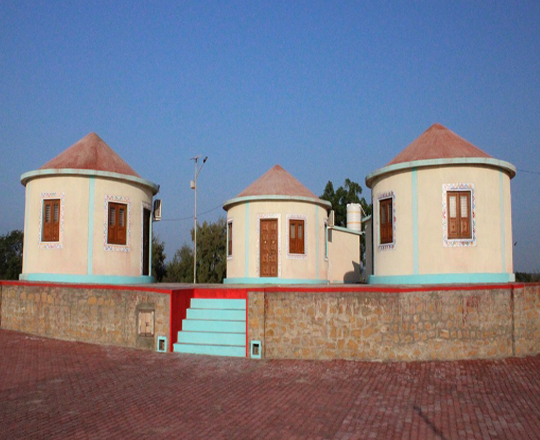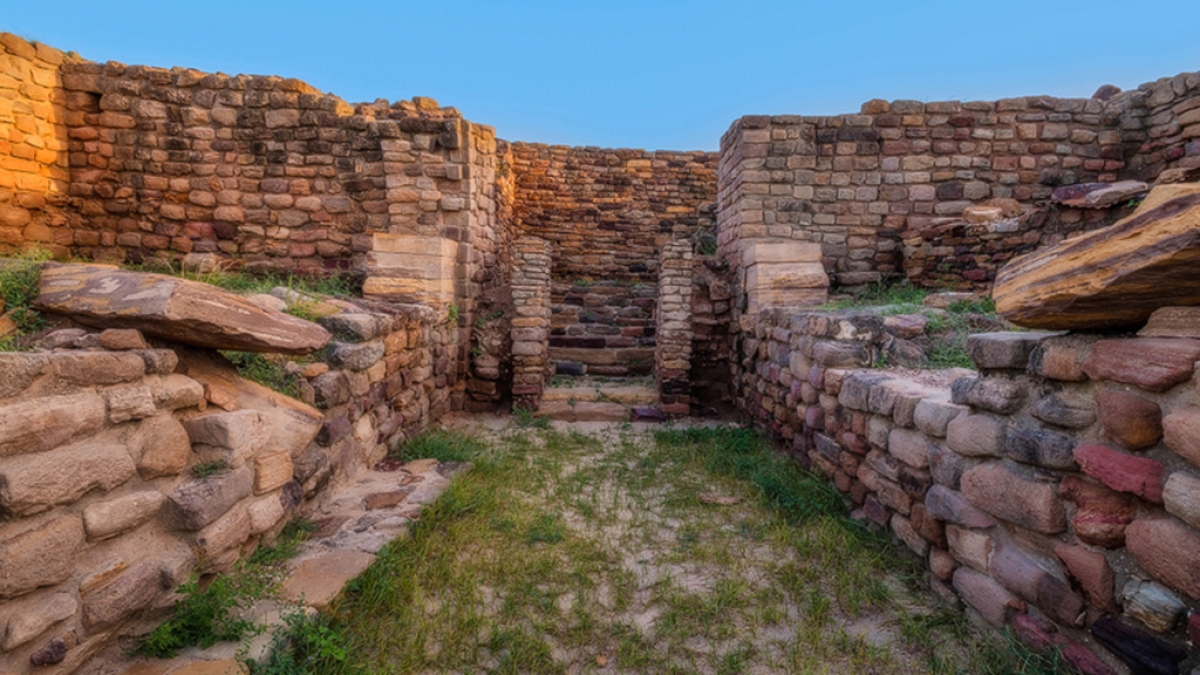

Far away from bustle of the city, deep in the heart of a majestic past, is the Dholavira Tourism Resort. It is an ideal retreat for families and nature enthusiasts alike. The resort offers a perfect blend of nature along with the comfort of modern amenities.
Come escape in to our beautifully designed guest cottages that stretch from a pristine local environment to the edge of the arid desert. Each of our rooms has been specially designed and constructed to give you a very local feel. They are small enough to be intimate and homely, but at the same time feel spacious enough to let you live absolutely unconfined. From the hut like shape of the roof, to the fittings and furnishings, all has been planned to give you a one-of-a-kind living feeling.

Nestled in Khadir Bet, a beautiful island in Kutch, the historic city of Dholavira is an archeological gold mine whose mysteries and folklore are just as intriguing as its majestic ruins. Considered to be the 6th largest metropolis of the Indus Valley Civilization, Dholavira is older than the Egyptian pyramids and displays remnants of a highly sophisticated urban culture that was way ahead of its time. The ancient people of this city lived in planned townships with streets, permanent houses, and even a drainage system.
The site gets its name from the nearby modern town situated about one kilometer away. It was first discovered in the 1967-68 by J. P. Joshi and excavations began early in the year 1990 by the Archaeological Survey of India. One of the most significant discoveries at Dholavira was made in one of the side rooms of the northern gateway of the city, and is often called the Dholavira Signboard. The Harappans had arranged and set pieces of the mineral gypsum to form ten large symbols or letters on a big wooden board. In time, the wood of the board decayed, but the arrangement of the letters survived. The letters of the signboard are comparable to large bricks that were used in nearby walls. The inscription is one of the longest in the Indus script, with one symbol appearing four times. A four sign inscription with big sized letters on a sand stone was also found at this site and is considered to be first such inscription on sand stone found at any of Harappan sites.

Once a flourishing trade destination, the area surrounding Dholavaria is now the Great White Rann of Kutch which is a salt bed covering an area of 2900 miles. Indigenous to the desert are unique wild animals including the Wild Ass, which is found only in this desert and nowhere else in the world. The sanctuary is also home to a large number of migratory birds like flamingoes. To protect such species of endangered animals and bird, the Wild Life Sanctuary of Kutch was established in the year 1986.
A walk through Dholavira is like a journey through time. It excites you, it mystifies you, it takes your breath away, but above all, it never lets you forget that you have been a part of its historic tour. Such is the enigma of Dholavira.